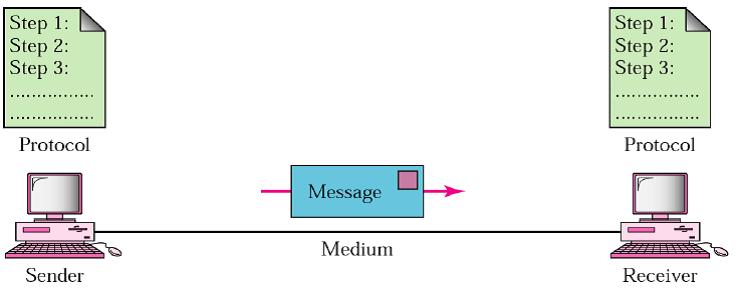Components of Data Communication
The different components of Data communication are shown in the following figure.

1. Message:
The message is the information (data) to be communicated. Popular forms of information include text, numbers, pictures, audio, and video.
You May Also Like:
Data Communications and Its Characteristics
Characteristics of Networks
Protocols and Standards
Different Data Flow Directions
2. Sender:
The sender is the device that sends the data message. It can be a computer, workstation, telephone handset, video camera, and so on.
3. Receiver:
The receiver is the device that receives the message. It can be a computer, workstation, telephone handset, television, and so on.
4. Transmission medium:
The transmission medium is the physical path by which a message travels from sender to receiver. Some examples of transmission media include twisted-pair wire, coaxial cable, fiber-optic cable, and radio waves.
5. Protocol:
A protocol is a set of rules that govern data communications. It represents an agreement between the communicating devices. Without a protocol, two devices may be connected but not communicating, just as a person speaking French cannot be understood by a person who speaks only Japanese.
You May Also Like:
Different Types of Connections
Types of Topologies
Types of Networks
Back to DCN Questions and Answers

